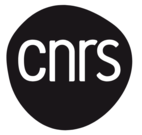International symposium "The visual poem in the Americas, 20th-21st centuries"
After Stéphane Mallarmé transformed the page into “a poetic category” and made the poem itself into a “specific organization of silence” (Dessons 2001), Guillaume Apollinaire dreamed in L’Esprit nouveau et les poètes (1917) of a “synthesis of the arts, of music, painting and literature” (quoted in Bertrand 2002), of an ideal renewal of language incarnated in part in the lyrical ideogram. Does not visual poetry, which we can define as “poetry meant to be seen” (Bohn 1986, 2), respond to this invitation? It is founded on the “porosity of genres as well as linguistic and visual material” (Lavergne, Mathios and Rodrigues 2021, 192), ambitiously dissolving dichotomies — space and time, writing and image, black and white, sensitivity and abstraction, I and non-I, scriptor and reader (Blanco 2016, 30) — in order to make us “enter into the open, […] images, texts, text-images” (Gisela Dischner, quoted in Chol 2021, 33).
As with any form of experimental poetry, visual poetry calls for its own proper cognitive process (Chol 2021, 34). Inasmuch as “the text is necessarily accessed as a process while images are accessed visually and globally”, the text complies above all to “a chronosyntax, while the image complies to a toposyntax”. The receiver of visual poetry must compound “the first global impression” (evidentia) with “an analytic observation” (perspicuitas) (Viala 2002). From the beginning of the 20th century up to today, poets have become theoreticians in order to offer “different protocols for visual and experimental poetry. This poetry indeed demands a constant theorizing, particularly as its direct approach seems effortless (Lavergne, Mathios and Rodrigues 2021, 199).
This conference seeks to explore this specific type of poetic production within a large temporal frame, from Mallarmé’s decisive impulse (A Throw of the Dice, 1897), Filippo Tommaso Marinetti (“Words in freedom”, Futurist Manifesto, 1912) and Apollinaire (Calligrammes, 1918) up to today, paying particular attention to the Americas. Poets from the Americas have seized these European revolutions as opportunities to create an aesthetics that is specific to the continent. By adopting a transnational perspective, we shall examine the different types of practices which inform the circulations and transcontinental, transatlantic (or even global) mutations of the American visual poem. The latter will be considered from a large perspective, allowing us to trace its dialogic dynamics as well as its composite, heteroclite or even contradictory cultural movements.
Within the hybrid heritage of Ezra Pound and William Carlos Williams’s imagism (« A Few Don’ts by an Imagist », 1913 and Spring and All, 1923) up to e. e. cummings’s typographical experimentations (Tulips and Chimneys, 1923), the poetics of Vicente Huidobro (Horizon carré, 1917), José Juan Tablada (Li-Po y otros poemas, 1920) and César Moro (Raphaël, 1936-37), from the spatialist mystique of Octavio Paz (Blanco, 1966), the chance procedures of Jackson Mac Low (22 Light Poems, 1968) from the concretion of signs (Haroldo de Campos, Galáxias, 1984) or visual poetry bringing together quotation and image with Rachel Blau DuPlessis (Graphic Novella, 2015) Susan Howe and M. NourbeSe Philip (The Nonconformist’s Memorial: Poems, 1992 and Zong!, 2008), the American visual poem runs through the long 20th century and investigates the visual possibilities of poetic language.
Looking at poem-objects, ready-mades or other poetic artefacts, intermedial creations continue to unfold today in numerous modes of expression and inspiration (be they minimalist, performative or conceptualist), which situate complex objects and processes at the forefront of poetic creation as well as at the meeting points of art forms. Calligrams proper, in which the text is displayed so as to represent “one or several objects and ideas evoked typographically and iconically” will be examined, along with “abstract and non-figurative calligrammatic dispositions, through space and the disposition of the line […] as well as of the letter” (Bertrand 2002). Three different periods will be of focus: the emergence of the avant-gardes around the 1920s, the neo-avant-gardes of the 1960s and 1970s and finally the contemporary period since the beginning of the 21st century.
The formal games of visual poetry are not arbitrary. By “dissolving traditional boundaries”, the visual poem weaves a network of metalinguistic relations, which are in turn interplastic and intertextual, and it “erases the separations between the text and the world” (Bohn 1986, 8), which give it its political acuteness, along with the weapons of humor. In the 1970s, “language experimentation could go all the way to its negation and was a means to achieve a language to contest the language of power and of the power of money” (Chol 2021, 32). Finally, visual poetry can also have metaphysical implications, to borrow a phrase from Marina Tsevetaïeva, by assigning to poetry the function of “subjecting the visible to serve the invisible” (quoted in Blanco 2016, 128).

![[Translate to English:] Labo CECILLE](/fileadmin/user_upload/poemevisuel/logo/labo_Cecille.png)



![[Translate to English:] LERMA Aix Marseille U](/fileadmin/_processed_/4/2/csm_logo_lerma_blanc_small_6cd759a81e.png)
![[Translate to English:] TIL Université de Bourgogne](/fileadmin/_processed_/c/c/csm_til_ul_bourgogne_a43074173f.jpg)